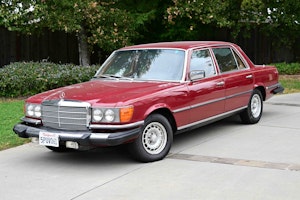Media | Articles
Not a coupe, not quite a convertible – but unmistakably a Porsche
Some loved it. Some detested it. It even caused rifts within the company that created it. Yet it literally opened up new horizons for topless motoring, not only for Porsche but for all of the auto industry.
“It” would be the Targa, an offshoot body style of the Porsche 911 that made its debut for the 1967 model year. It’s almost a convertible, except for that roll bar overhead, a wide basket handle wrapped in brushed aluminum. It was a noble solution from a safety and structural viewpoint, but the aesthetics were polarizing, as the Targa B-pillar interrupted the sublime fastback profile of the 911 coupe.
An open-top model was part of Porsche’s DNA going back to the Speedsters and 356 Cabriolets of the 1950s and early ’60s. But developing a fresh-air version of the 911 proved vexing.
In his definitive book, “Excellence Was Expected,” historian Karl Ludvigsen explained that Porsche considered a number of approaches to the challenge. “Should it be a variant of the coupe’s form, or should it be a pure cabriolet with special lower body panels of its own at the rear?” Ludvigsen wrote, noting that the 911’s chief designer, Ferry Porsche III, nicknamed Butzi, favored the latter approach.
“To me, it should have been a pure cabrio alongside the coupe,” Butzi Porsche told Ludvigsen. “I supposed any convertible looks better with a notchback; a fastback does upset the visual balance somehow. There has never been a successful rear-engined cabriolet with a successful fastback.”
Marketplace
Buy and sell classics with confidence
But Butzi was overruled. Because the open model would account for only a small share of the production, he was told, it would have to share all of its structure and rear sheet metal with the coupe. Within these strict limits, the Targa took shape.
The Targa’s roll bar configuration, unique at the time, evolved in order to maintain the lateral rigidity of the body’s shoulders, just behind the doors, that was typically provided by the roof structure.
“There were two excellent practical reasons for fitting a roll bar,” Butzi explained. “First, it meets U.S. competition requirements, and second, this type of convertible can be controlled better when closed, whereas most tend to fill up and swell like air balloons.”
Another problem that required a solution was how to engineer a fold-down rear section. The section was initially a clear plastic panel that had to be zipped in, a challenge when temperatures fell below 60 degrees and the plastic was less pliable. Before long, the Targa’s rear screen was replaced with a fixed glass window.
Named after Porsche’s efforts at the famous Targa Florio race in Sicily, the Targa made its public debut at the 1965 Frankfurt auto show. But it would take another year to put the Targa into production.
Porsche was not the first company to devise a removable roof panel system, but it was by far the most successful. It provided a way forward for many other manufacturers, from Chevrolet to Ferrari, at a time when concerns were growing about rollover protection in convertibles.
The Porsche Targa sold briskly, reaching as much as 40 percent of 911 production in the first couple of years. The Targa remained throughout the evolution of the 911 even though an actual cabriolet was introduced in 1982.
For the 993 generation, introduced in 1993, the Targa would see its biggest revolution since the model’s inception, with the roll hoop being replaced with a panoramic glass roof running all the way down to the decklid. At the touch of a button this could slide back, effectively creating a giant sunroof.
In 2014, the Porsche 911 Targa went back to its roots, with the 991 generation seeing the return of the classic roll bar design. Finished in brushed aluminum, the roof is no longer removed manually. Instead, the fabric top section stows automatically underneath the rear seats.
Are Targa values today higher than similarly equipped coupes? For this, we turned to Dave Kinney, publisher of the Hagerty Price Guide. “It’s a shifting answer,” Kinney says. Europeans prefer the coupes as they are thought of as more serious cars. The same has often been true for American collectors. But the relative lack of interest in Targas has made them a comparative bargain to the coupes.
Kinney adds that the appeal of open-air motoring is the overriding factor.
“Now, some of the Targas are leaving U.S. shores for repatriation to Europe.”
20170726012534)









